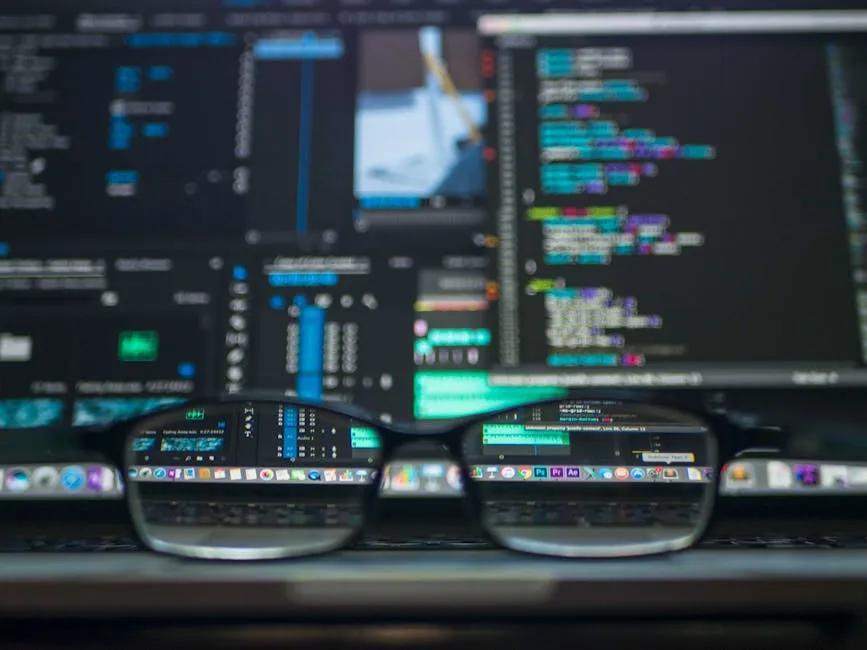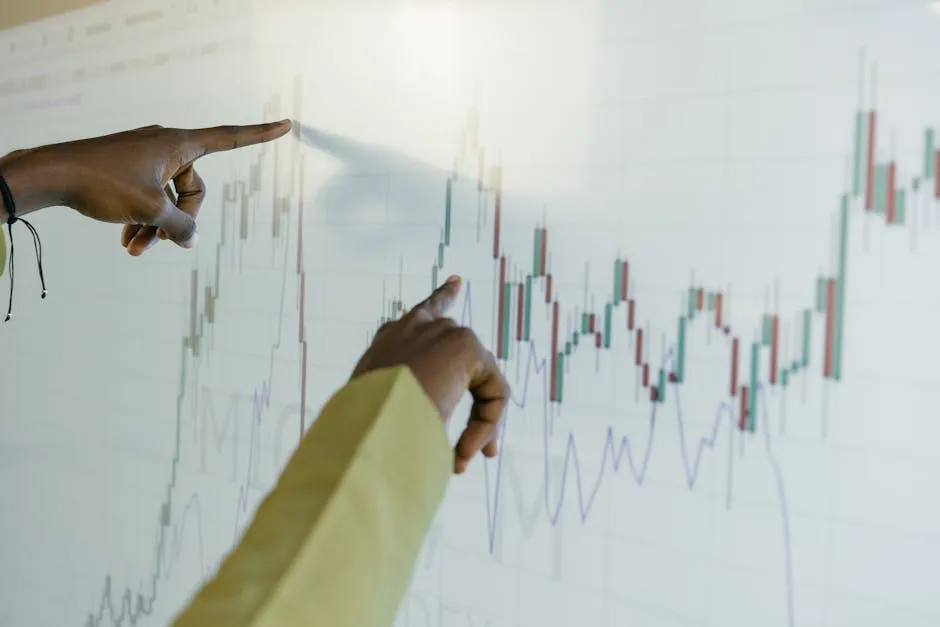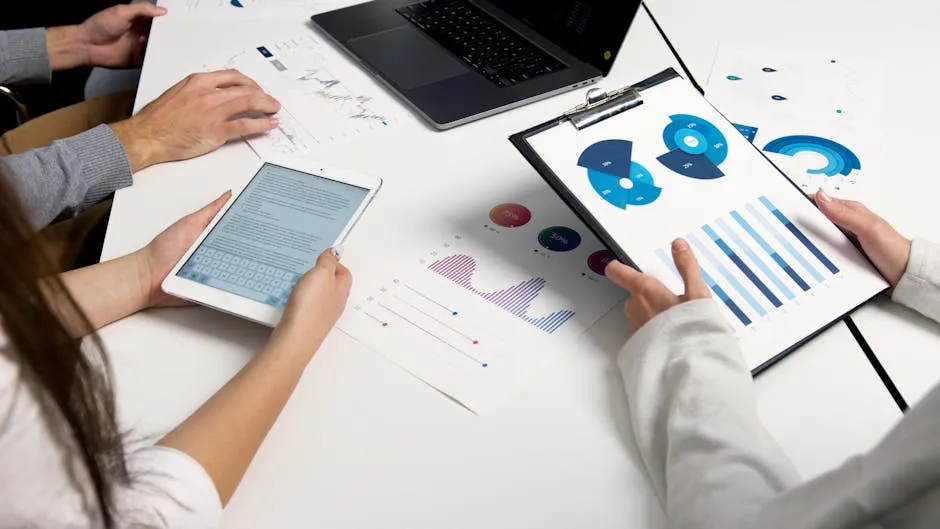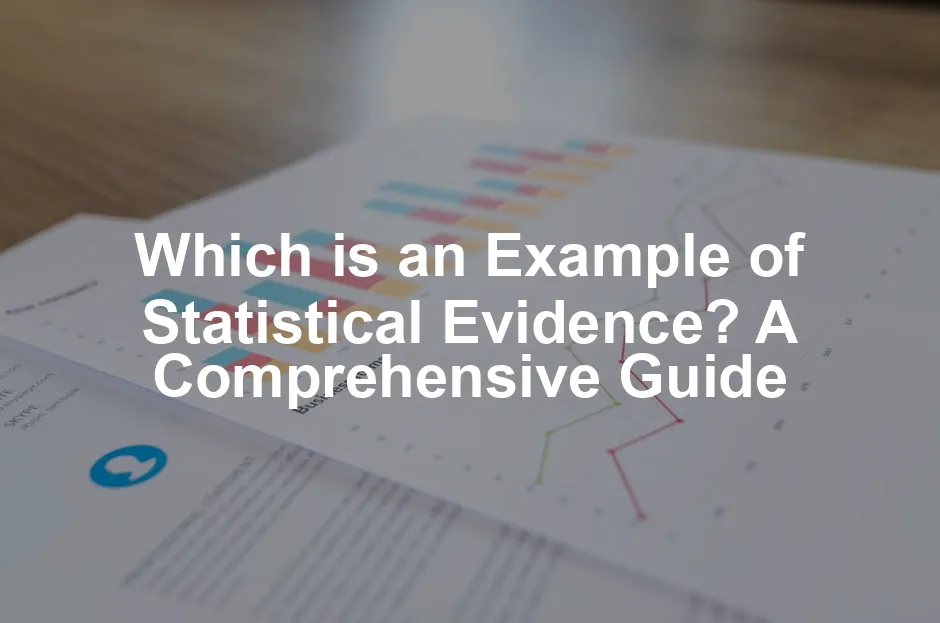Introduction
In today’s data-driven society, statistical evidence is a cornerstone of informed decision-making. From health policies to market analyses, statistics help us make sense of complex issues. But what qualifies as statistical evidence? It’s not just about numbers; it’s about how we interpret and use them to support our claims.
Imagine you’re trying to convince your friends that pineapple belongs on pizza. Your argument might rely on personal taste, but what if you had statistics to back it up? For instance, “Studies show that 60% of people enjoy pineapple on pizza.” That’s statistical evidence at work! It adds weight to your argument, making it more persuasive and credible.
Statistical evidence is a collection of data points that have been organized and validated. This data can come from various sources and can be quantitative (numerical) or qualitative (descriptive). Think of it as the backbone of research and argumentation—without it, claims would simply be opinions.
In this guide, we’ll break down the essentials of statistical evidence. We’ll explore its definitions, types, and real-world applications. By the end, you’ll be armed with the knowledge to navigate the world of statistics like a pro. So, buckle up—your journey to statistical savviness begins now!

Summary of Key Points
This article will cover:
- Definition of Statistical Evidence: A clear understanding of what constitutes statistical evidence and its significance in various fields.
- Types of Statistical Evidence: Different forms and sources of statistical evidence, including quantitative vs. qualitative data and primary vs. secondary sources.
- Examples of Statistical Evidence: Practical examples that showcase how statistical evidence is applied in real-world scenarios.
- Importance of Statistical Evidence: A discussion on why statistical evidence is crucial in research, policy-making, and everyday decision-making.
- Common Misinterpretations: An analysis of the pitfalls and misuses of statistical evidence, including examples of misleading statistics.
- FAQs: Addressing frequently asked questions to further clarify common misconceptions surrounding statistical evidence.
With this guide, you’ll not only understand statistical evidence but also appreciate its role in shaping our understanding of the world. Whether in discussions, debates, or everyday choices, being aware of how statistics work can empower you to make informed decisions. Now, let’s get started!

Types of Statistical Evidence
Quantitative vs. Qualitative Evidence
Statistical evidence can be categorized mainly into two types: quantitative and qualitative.
Quantitative evidence is all about numbers. It involves measurable data that can be analyzed statistically. For instance, if a study reports that 75% of adults prefer coffee over tea, that’s quantitative evidence. It provides a clear and numerical basis for understanding preferences. This type of evidence is particularly useful in fields like economics or public health, where precise measurements are crucial. Want to see trends over time or correlations? Quantitative data is your best friend!
On the other hand, qualitative evidence focuses on descriptions and characteristics. It deals with non-numerical data, like opinions or experiences. For instance, interviews or open-ended survey responses can reveal how individuals feel about a product. This type of evidence is often used in social sciences, where understanding context and human behavior is essential.
When to use each type? If you need hard numbers for a business report, go for quantitative. But if you’re researching societal behavior, qualitative evidence can provide rich insights. A mix of both often yields the best results.

Speaking of quantitative evidence, if you’re looking to enhance your statistical analysis skills, consider grabbing a copy of Statistics for Dummies. It’s a friendly guide that simplifies complex concepts and helps you grasp the foundation of statistical analysis without drowning in numbers.
Primary vs. Secondary Sources
Next, let’s explore primary and secondary sources of statistical evidence.
Primary sources are original data collected firsthand. Think surveys, experiments, or observational studies. For example, a researcher conducting a survey on eating habits is gathering primary data. This evidence is usually more reliable, offering direct insights into the topic at hand.
However, primary sources can be time-consuming and expensive. Gathering data requires resources, and sometimes it’s just not feasible.
Secondary sources, conversely, analyze or interpret existing data. This includes research articles, reports, or databases. For instance, using census data to analyze demographic trends would be considered secondary evidence.
The advantage? Secondary sources save time and effort. You can access a wealth of information without starting from scratch. However, they may lack the depth and specificity of primary data. Always consider the context and reliability of the sources you choose!

If you’re curious about how to measure those intangible aspects in your business, check out How to Measure Anything: Finding the Value of “Intangibles” in Business. This book is a treasure trove of insights that can help you quantify what seems unquantifiable!
A Closer Look at Data Sources
Now, where can you find reputable statistical evidence? Several sources stand out.
Government databases are gold mines of information. The U.S. Census Bureau and the Bureau of Labor Statistics publish a plethora of data. Academic journals are another excellent resource, providing peer-reviewed studies that add credibility to your research. Remember, peer-reviewed sources mean experts have scrutinized the data, ensuring quality and reliability.
Additionally, organizations like the World Health Organization and the Centers for Disease Control and Prevention offer valuable health-related statistics. These sources can be instrumental in public health research, policy-making, and more.
In summary, the choice of data source matters. Peer-reviewed and official sources enhance credibility. Be discerning in your selections to ensure that your statistical evidence is robust and trustworthy.

By understanding the types of statistical evidence and their sources, you can build a solid foundation for your research. Whether you’re crafting policy or simply curious, knowing where to look and what to use is crucial in navigating the data-driven landscape. If you want to dive deeper into the world of data science, consider checking out Data Science for Business: What You Need to Know about Data Mining and Data-Analytic Thinking. It’s a fantastic guide for anyone looking to harness the power of data in their business decisions.
Importance of Statistical Evidence
Role in Decision-Making
Statistical evidence plays a vital role in decision-making, both personally and professionally. Imagine a small business owner named Sarah. She runs a quaint coffee shop. Last year, she noticed a dip in sales. Instead of guessing what went wrong, she analyzed customer data. She discovered that a significant number of her customers preferred herbal teas over coffee. With this insight, she decided to introduce a new line of herbal teas. The result? A 30% increase in sales! Statistical evidence guided her decision, transforming a potential crisis into an opportunity.

On a broader scale, statistical evidence is essential in policy-making and public health. For instance, during the COVID-19 pandemic, governments relied on statistical models to decide on lockdown measures. These models analyzed infection rates, hospitalizations, and mortality rates. By using statistical evidence, policymakers could make informed decisions that impacted millions. The data-driven approach not only helped in managing the health crisis but also in planning for economic recovery.
To navigate these complex scenarios, consider picking up The Data Science Handbook: A Guide to Data-Driven Decision Making. It’s an excellent resource that can help you understand the intricacies of data interpretation and its implications for decision-making.
Enhancing Credibility
Statistics can significantly enhance the credibility of arguments and claims. Have you ever been in a debate? You might passionately express your opinion, but without solid evidence, your argument can fall flat. Enter statistical evidence! It adds weight to your claims. For example, a study might show that 70% of people support renewable energy initiatives. Citing this statistic not only strengthens your argument but also garners trust from your audience.

In persuasive communication, statistics serve as a powerful tool. They provide a factual foundation for your claims. When you present data, you show that your arguments are backed by research. This transforms your words from mere opinions into credible statements that resonate with your audience.
If you’re looking to improve your data visualization skills, check out The Complete Guide to Data Visualization. This book offers practical tips and strategies to create impactful visual representations of data, making your arguments even more convincing!
Identifying Trends and Patterns
Statistical evidence is invaluable in recognizing trends and patterns. Think about fashion. Designers often analyze sales data to understand trends. By examining what styles are popular, they can predict future preferences. For instance, if data shows a spike in demand for sustainable fashion, brands may pivot their production strategies accordingly.

In the realm of public health, statistical evidence helps identify patterns in disease outbreaks. Health officials analyze data to track the spread of illnesses. This information allows them to implement timely interventions. For example, if statistical evidence reveals a rising trend in flu cases, health departments may launch vaccination campaigns to curb the spread.
In conclusion, statistical evidence is not just a collection of numbers; it’s a powerful instrument that drives informed decision-making, enhances credibility, and reveals trends. In every facet of life, from business to healthcare, understanding and utilizing statistical evidence can lead to better outcomes and a deeper comprehension of the world around us. If you’re interested in learning more about data analysis techniques, consider Data Analysis Using Regression and Multilevel/Hierarchical Models. It’s a fantastic resource for understanding how to apply statistical methods effectively.

Statistics Can Lie
Mark Twain once quipped that there are three kinds of lies: lies, damned lies, and statistics. This famous remark highlights a crucial truth about statistical evidence: it can easily be misinterpreted. When numbers are presented without context, they can lead us to wrong conclusions. Consider a study claiming that “people who eat breakfast are thinner.” If we take this at face value, we might conclude that breakfast is the key to weight loss. But wait! Could it be that thinner people are simply more likely to eat breakfast? This misinterpretation—believing correlation implies causation—is a common statistical fallacy.
Correlation vs. causation is a classic pitfall. Just because two events occur simultaneously doesn’t mean one causes the other. For example, ice cream sales and drowning incidents both rise in summer. Is ice cream making people take a dip? Nope! The warmer weather is the real culprit, leading to more ice cream and more water activities. Always scrutinize the relationships behind the numbers, or you might end up with a faulty premise.

The Base Rate Fallacy
The base rate fallacy is another tricky statistic misstep. It occurs when we ignore the general prevalence of something and focus solely on specific information. Let’s say there’s a test for a rare disease that’s 99% accurate. Sounds great, right? But if only 1 in 10,000 people have this disease, the likelihood of a positive test result being accurate diminishes drastically. In fact, most positive results will be false positives. Ignoring the base rates leads to misguided beliefs, so always consider the bigger picture!
This fallacy pops up in many scenarios. Think of job applicants. If a job requires advanced skills and only 2% of applicants have them, yet 60% of interviewees receive job offers, the base rate of qualified candidates matters. So, before assuming the hiring process is fair, check the base rates!

Misleading Graphs and Charts
Visual representations of data can be both enlightening and deceptive. A well-crafted graph can simplify complex information, but manipulation can lead to misleading interpretations. For example, a bar chart might use inconsistent scales, exaggerating differences between data points. Imagine a graph showing a significant rise in crime rates, but upon closer inspection, it uses a y-axis that starts at 50 rather than 0. Suddenly, what seemed alarming might not be as dramatic.
Another common trick is the selective use of data. Presenting only certain time frames can create a narrative that doesn’t reflect the whole story. Always analyze the axes, scales, and data selection in any graph before jumping to conclusions. Remember, a picture may be worth a thousand words, but it can also hide a thousand truths.

FAQs
What is an example of statistical evidence?
An excellent example of statistical evidence comes from public health studies. Consider research that indicates, “Vaccination rates for flu shots are 30% higher in communities with educational campaigns.” This statistic doesn’t just state a fact; it shows a clear relationship between educational efforts and increased vaccination rates. It’s a powerful piece of evidence that underscores the importance of education in public health initiatives.
How can I find reliable statistical evidence?
Finding reliable statistical evidence requires a keen eye and a bit of detective work. Start with reputable sources like government databases or peer-reviewed journals. Websites like the U.S. Census Bureau and the World Health Organization are treasure troves of credible data. When evaluating these sources, check the methodology. Was the sample size adequate? Were the data collection methods sound? Ensure the findings are recent and relevant. Trustworthy sources will typically provide clear citations, so you can trace the data back to its original context.
What are common pitfalls when interpreting statistical evidence?
Interpreting statistical evidence can be a minefield. One common pitfall is assuming correlation equals causation. Just because two trends occur together doesn’t mean one causes the other. For example, a rise in ice cream sales and increased drowning incidents both peak in summer, but one doesn’t lead to the other. Another mistake is ignoring sample size. A study based on just ten people can lead to wildly inaccurate conclusions. Lastly, pay attention to the framing of statistics. A statistic can sound alarming in one context and benign in another—always seek the full story!
Is all statistical evidence trustworthy?
Not all statistical evidence is created equal. While many statistics are collected rigorously, others can be misleading or manipulated. Critical thinking is essential when evaluating statistical claims. Consider the source and its potential biases. Are the statistics presented in a way that might mislead? For example, a statistic might be true but presented without context, leading to misinterpretation. Always ask questions: Who conducted the research? What methodology was used? By maintaining a healthy skepticism and seeking transparency in the data, you can better discern the trustworthiness of statistical evidence.
Please let us know what you think about our content by leaving a comment down below!
Thank you for reading till here 🙂
If you’re interested in learning more about statistical methods, consider checking out Statistical Methods for the Social Sciences. This book is an essential read for anyone looking to apply statistics in social research.
To further enhance your skills, a practical guide like The Art of Statistics: Learning from Data can provide you with deeper insights into the statistical processes that shape our understanding of the world.
All images from Pexels




